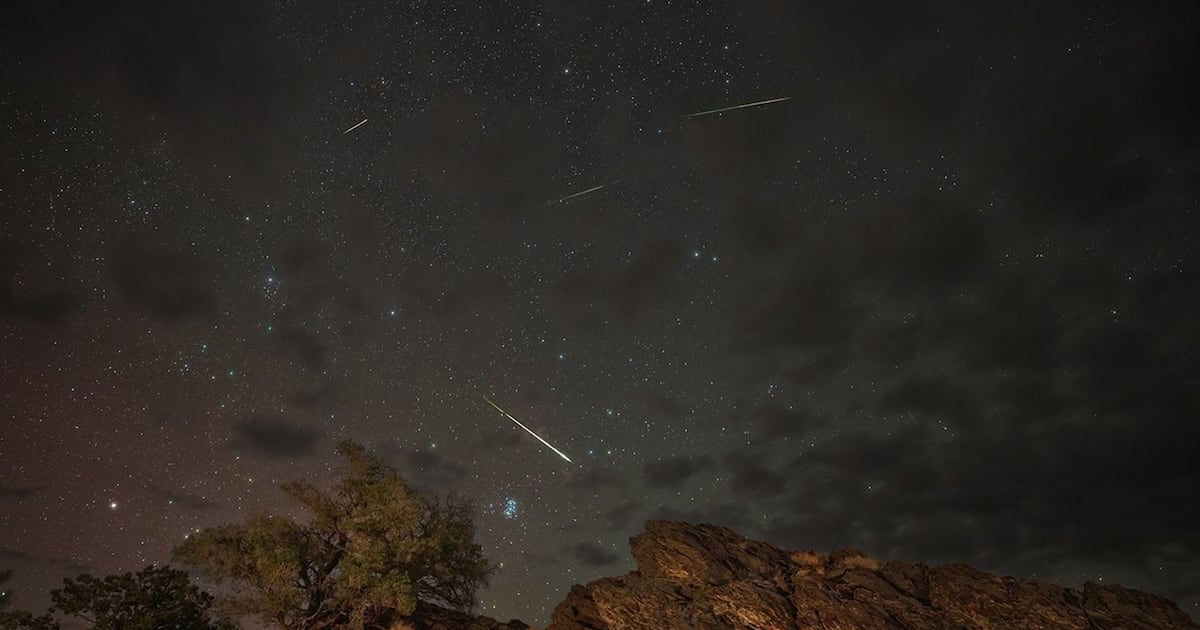A “prolific” meteor shower will dash across Toronto’s skies next week, but the moonlight could outshine how visible they will be to stargazers.
The Perseids meteor shower occurs every summer in the northern hemisphere from late July to mid-August. This year they peak on the evening of Aug. 12 to Aug. 13.
Walter Stoddard, senior scientist at the Ontario Science Centre, tells CTV News Toronto that this celestial event is often a favourite since the Perseids can produce some “spectacular” meteors and even some fireballs, which are larger streaks through the air.
“It is one of the most prolific ones in terms of number of meteors per hour and it also tends to produce a few fireballs,” Ethen Sun, astronomer at the department of David A. Dunlop Astronomy and Astrophysics at the University of Toronto, told CTV News Toronto.
The Perseids are debris left behind from Comet 109/Swift-Tuttle—named after Lewis Swift and Horace Tuttle who discovered the comet in 1862. The comet has an orbit of 133 years and passed through the inner solar system in 1992.
“We got an upgrade, if you will. We got additional debris added in that path in 1992 and so we ended up with a peak in the meteor shower,” Stoddard explained. “Every year since then has still been a good year.”
The reason why they are called the Perseids is because of their radiance and their proximity to the constellation Perseus when they are at their most active.
According to NASA, the Perseids shower between 50 and 100 meteors per hour—though both Stoddard and Sun say the moonlight this year will reduce the Perseids’ visibility.
Moonlight to eclipse Perseids visibility
Even though August’s full moon, dubbed the sturgeon moon, will be the most visible from Friday night to early Saturday morning, Sun says its beams will block some of the meteors from sight.
“The main thing is that the moonlight gets scattered in the atmosphere, makes the sky a little blue, and you can’t see the faint meteors. The other factor is that when the moon is up in the sky, it’s hard for your eyes to fully adjust,” Sun said.
The American Meteor Society says the moon will be 84 per cent full that evening and Stoddard notes because of that, about 25 per cent of the meteors will be visible during its peak.
“Let’s say that we have a conservative estimate of about one a minute, so if only 25 per cent of them are bright enough for us to notice them. Well, that’s one every four minutes,” Stoddard said.
‘Still worth seeing’
While there’s not much that can be done about the moonlight, heading outside of the city—away from light pollution—would help stargazers’ chances of seeing the Perseids, Sun says.
“One thing you can do is try and put an obstacle, like a tree or something, between you and the moon, (but) make sure you’re not blocking out Perseus, where the actual meteor shower is,” the astronomer says.
Though the peak rates occur overnight, Stoddard says stargazers may have a better chance to view the Perseids earlier in the evening at around 9 or 10 p.m.
“Typically we say (between midnight and dawn is) when you want to look, but the moon’s up, so if you look before 10 p.m. in the northeast, you have a higher chance of seeing more streaks,” Stoddard said. “It’s just the problem is it’s low on the horizon, so most of them might be blocked or cut off by trees, by land, by whatever is across your horizon.”
If wildfire smoke clouds Toronto’s skies this week, Sun says it could also impact the clarity of the Perseids as it would blanket the faintest meteors.
“I would say that if you’ve never seen a meteor shower, it is still worth seeing, even with all these effects, you should expect to see like on meteor every few minutes,” Sun said.
When is the next meteor shower?
The next time stargazers can catch a meteor shower is in the fall, when the Orionids take over the night sky from Oct. 2 to Nov. 12.
“It’ll be from the constellation Orion and the moon will be two per cent full,” Stoddard said, pointing to a better viewing chance when they peak on Oct. 22 to 23.
According to the American Meteor Society, the Orionids are about as active as the Perseids when they are peaking, shooting 50 to 75 meteors per hour.

